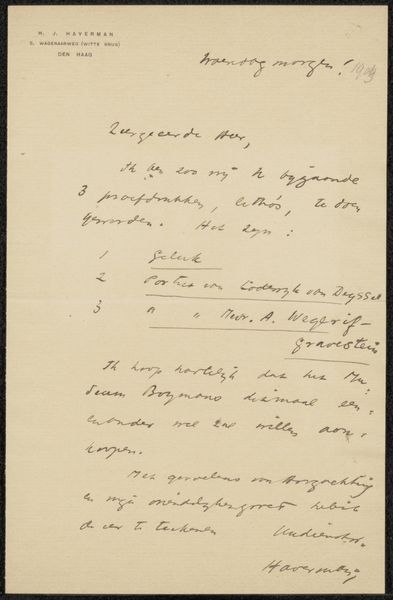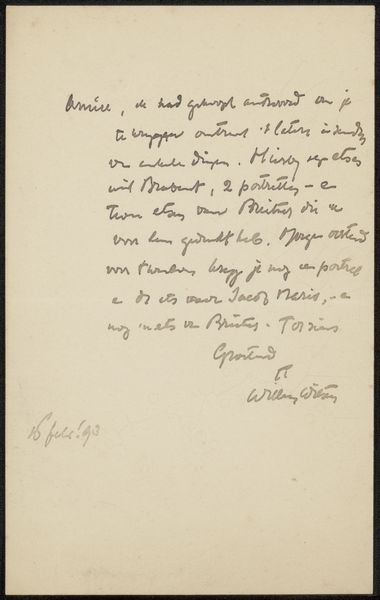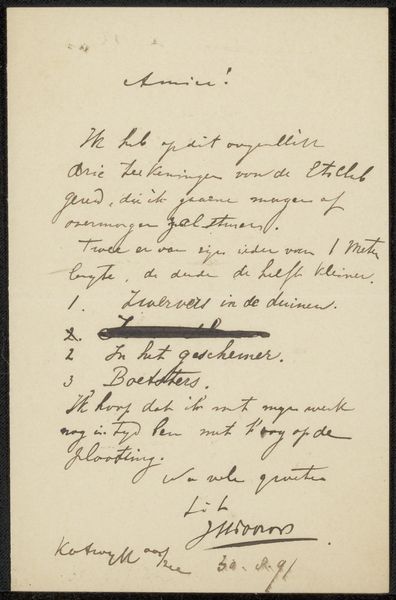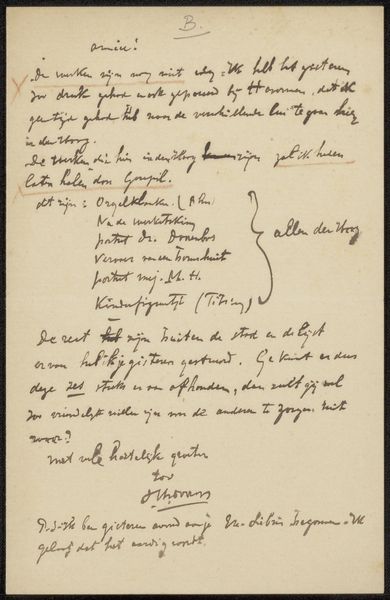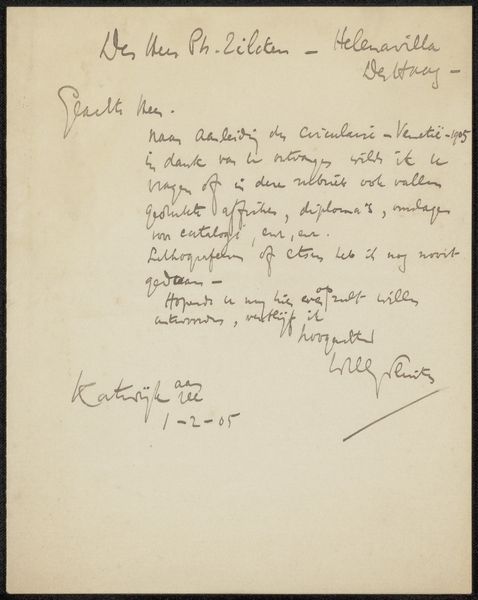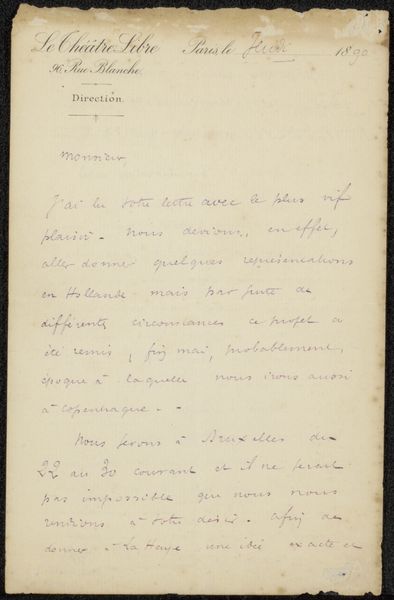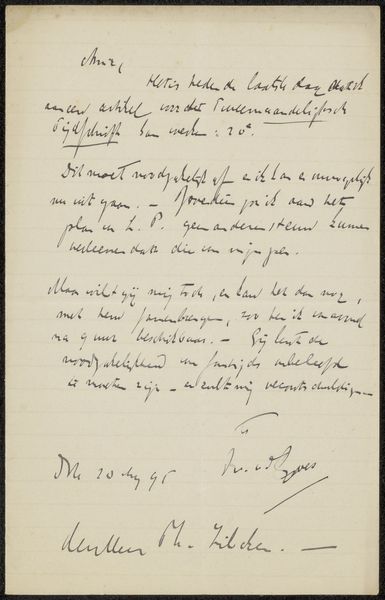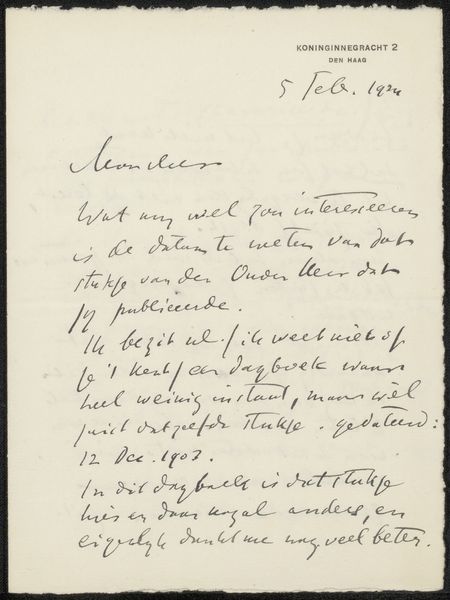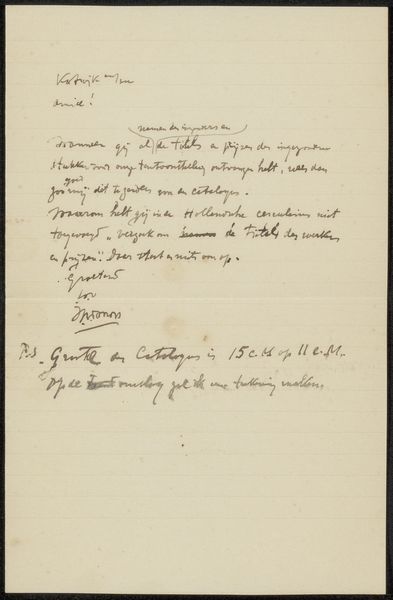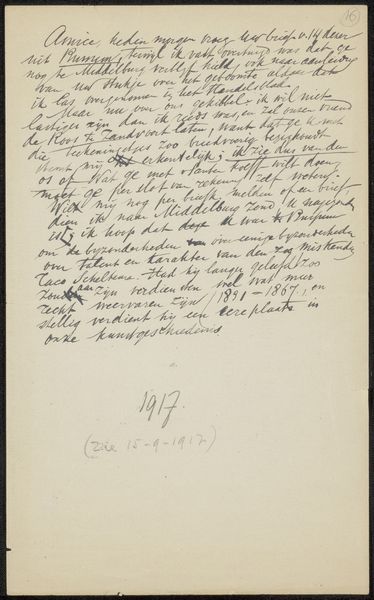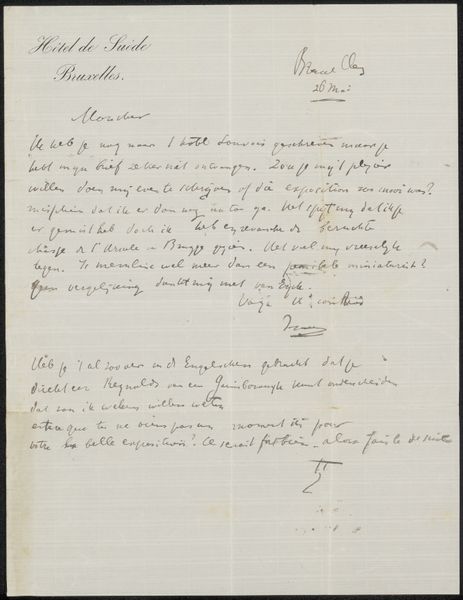
Copyright: Rijks Museum: Open Domain
Editor: So this is “Brief aan Philip Zilcken” by Willem Witsen, from 1893. It’s ink on paper and resides in the Rijksmuseum collection. It strikes me as quite intimate – a glimpse into the artist's thoughts. How do you interpret this work? Curator: To me, this isn't just a letter; it's a carefully constructed image. Note the placement of the handwriting – it's deliberate. Even the penmanship itself becomes a symbolic element. We see script, a very personal expression. Consider, what does handwriting communicate about the individual, their era, their social standing? Editor: That’s a really interesting way to look at it. I guess I was focusing on what it *says*, not so much *how* it says it. Curator: Precisely. In what context do we typically find the written word presented this way? Letters carry emotional and informational weight, often deeply personal. Why do you think Witsen chose to share what might have been a private communication? Editor: Maybe he saw artistic merit in its candidness, a reflection of his immediate thoughts? It's almost like a stream-of-consciousness captured in ink. Curator: Perhaps. The act of writing and preserving it as art transforms the mundane into something enduring. Witsen consciously imprints cultural values into these strokes, alluding to his relationships, cultural sensitivities, and artistic principles. Notice how that ordinary message transcends, carrying emotional residue from late 19th century Amsterdam! What remains with you about this ‘brief’ encounter? Editor: That the seemingly simple form of a letter can convey such complexity! I definitely have a richer appreciation for Witsen’s approach now.
Comments
No comments
Be the first to comment and join the conversation on the ultimate creative platform.

